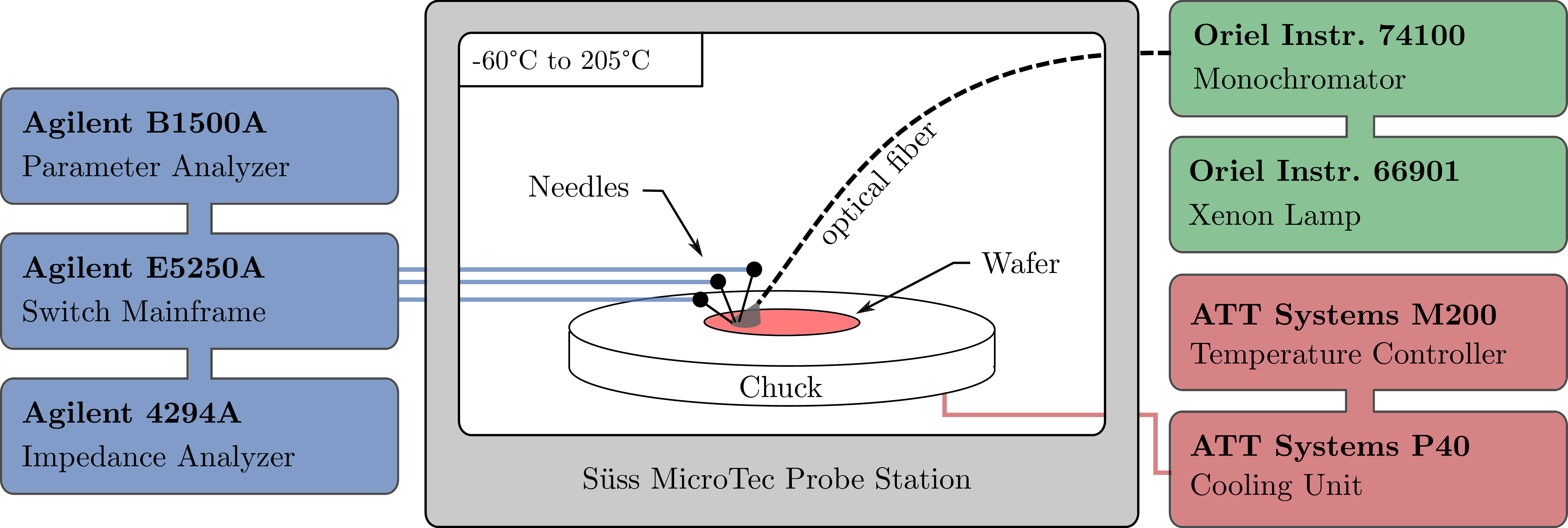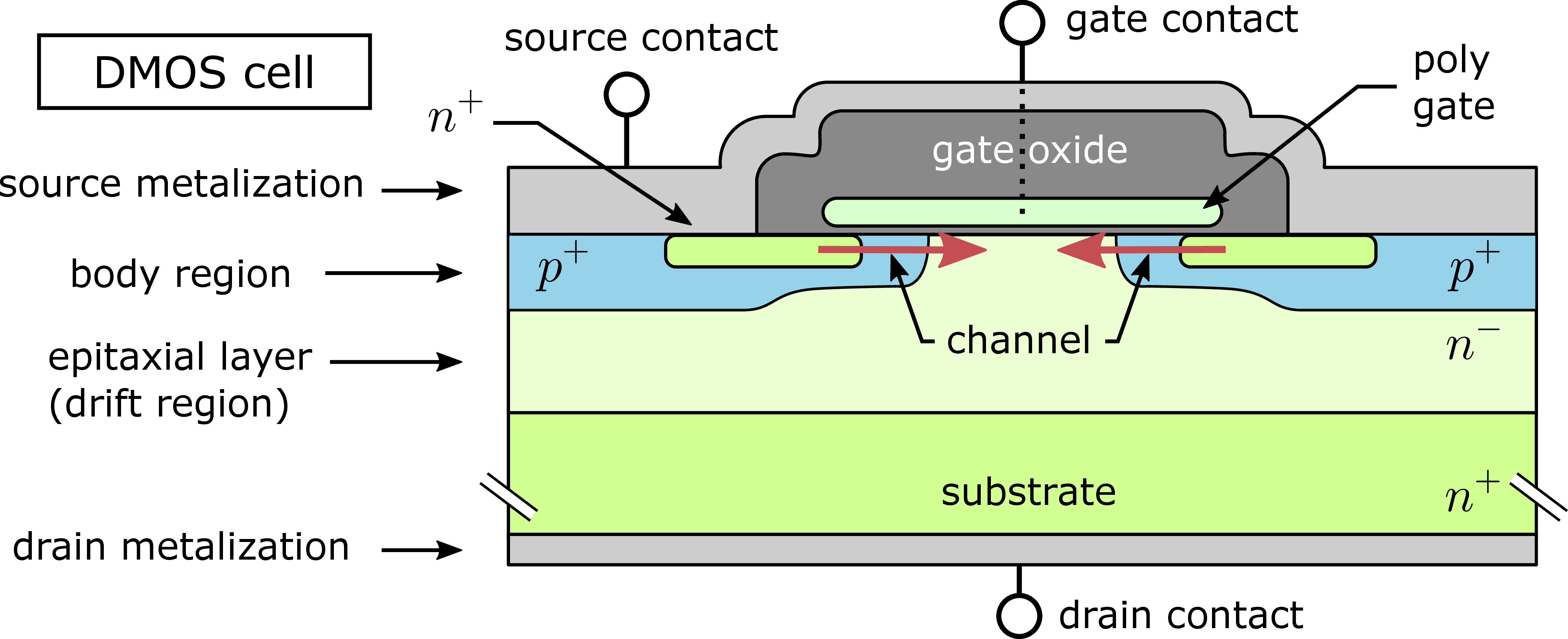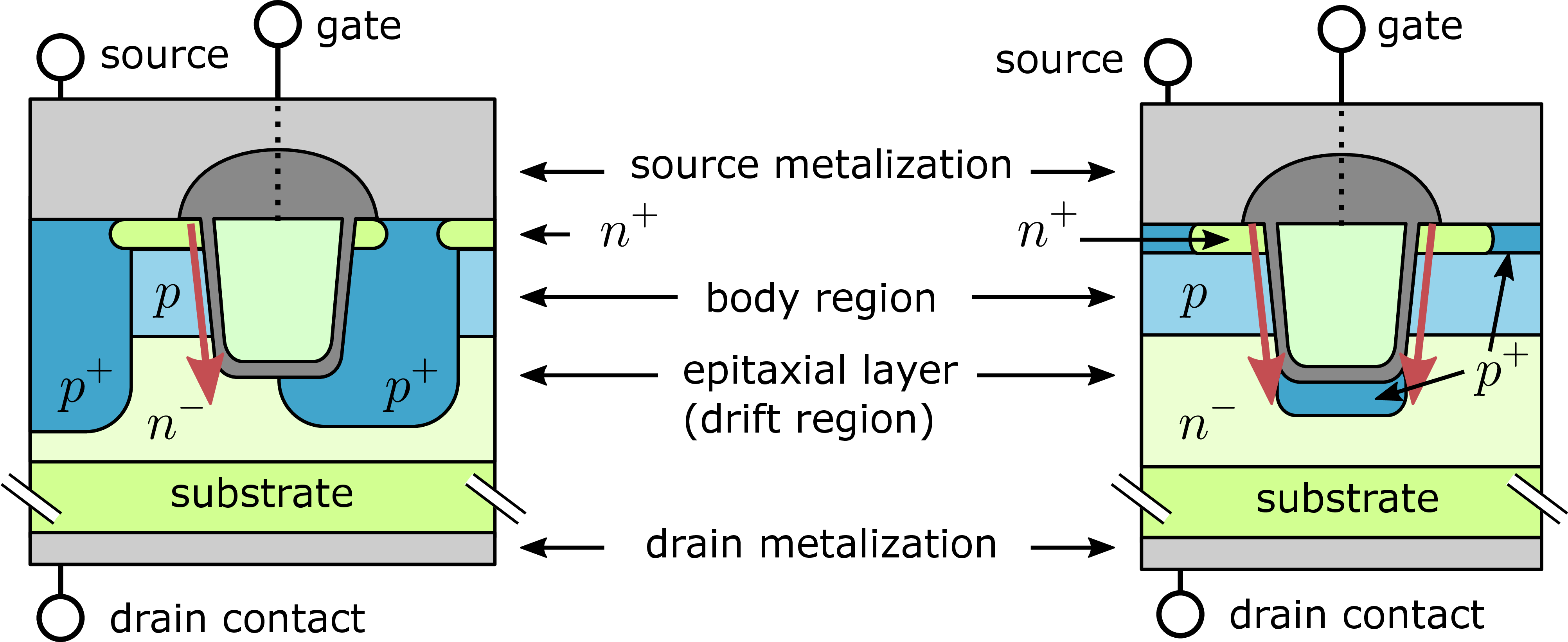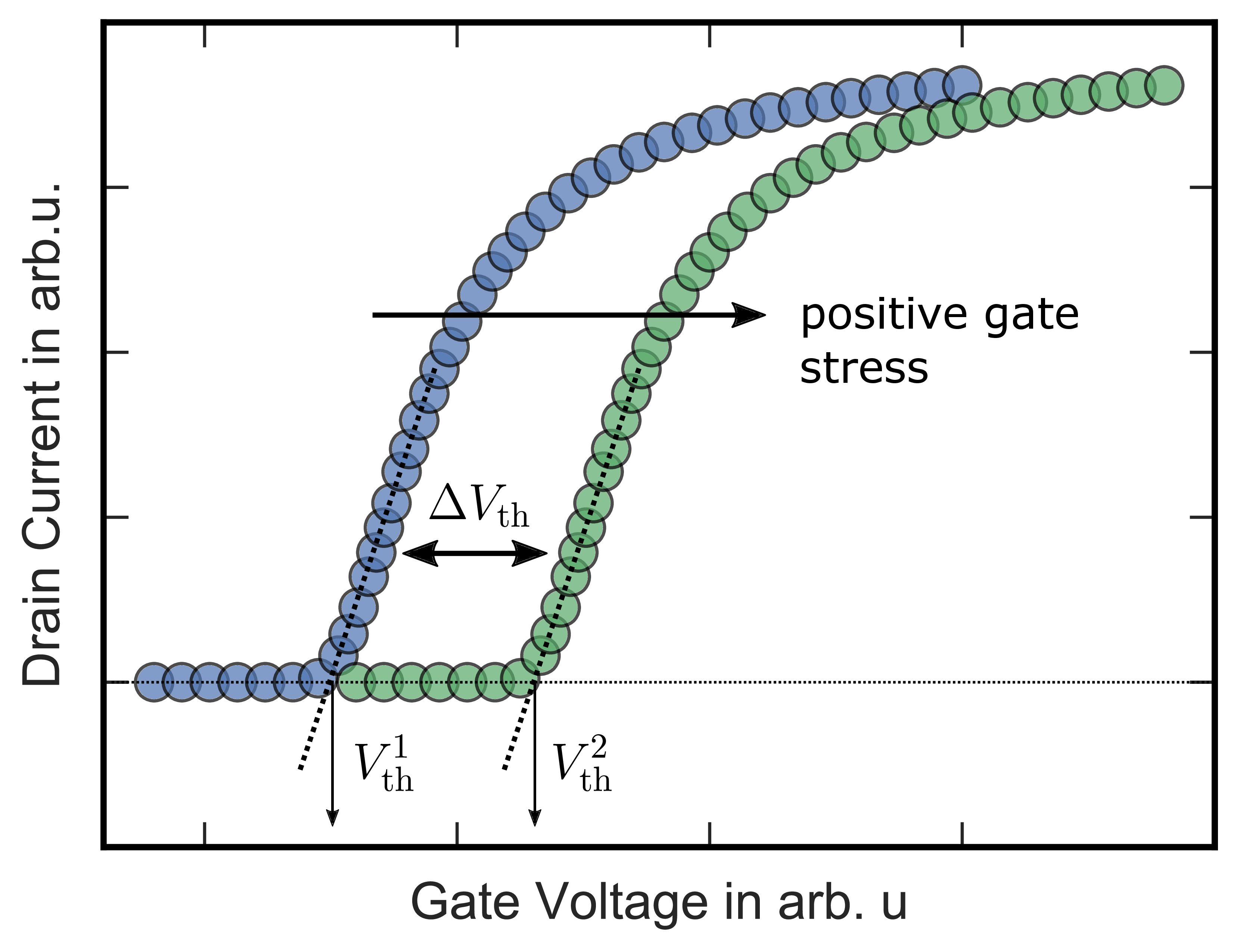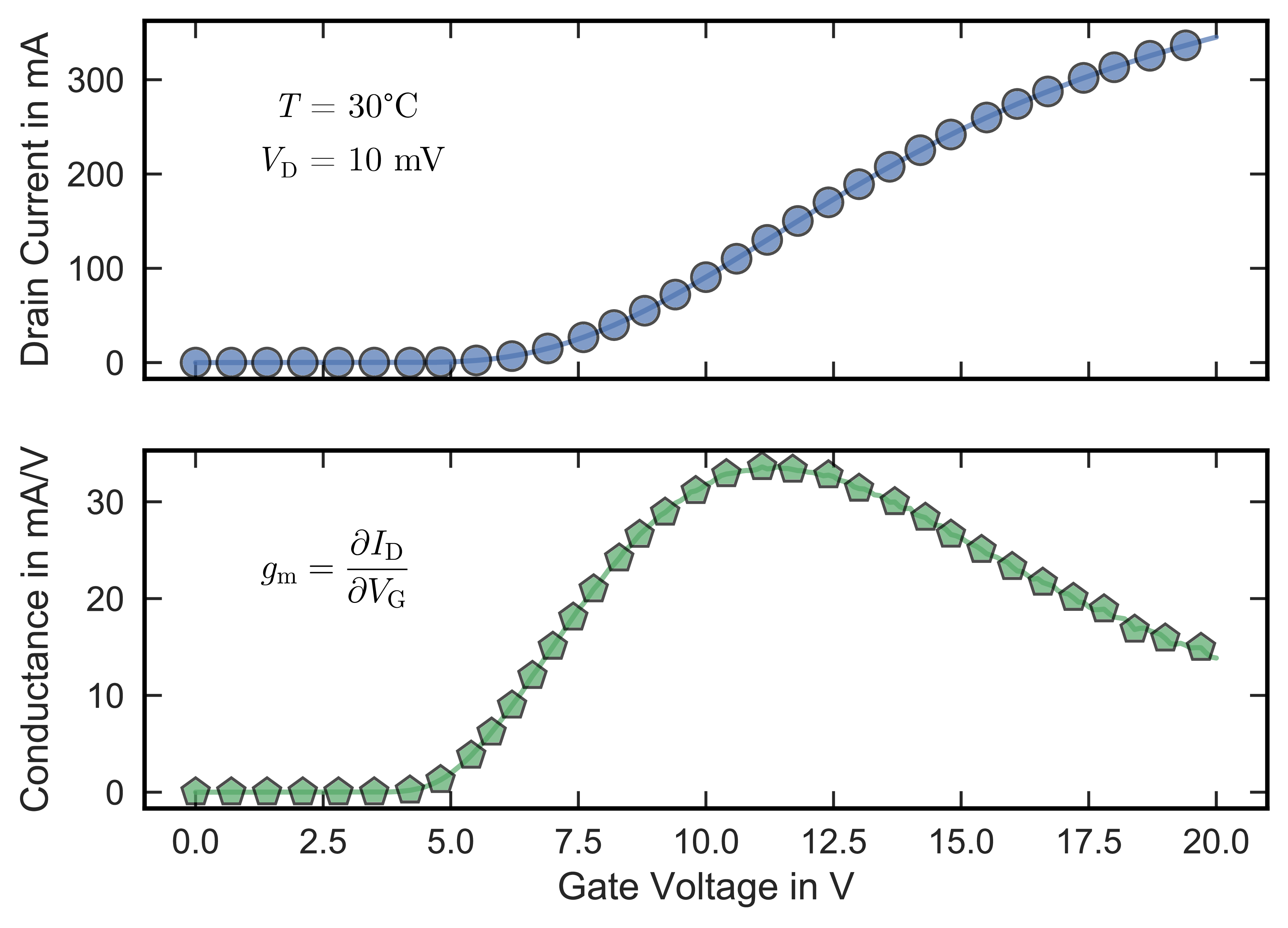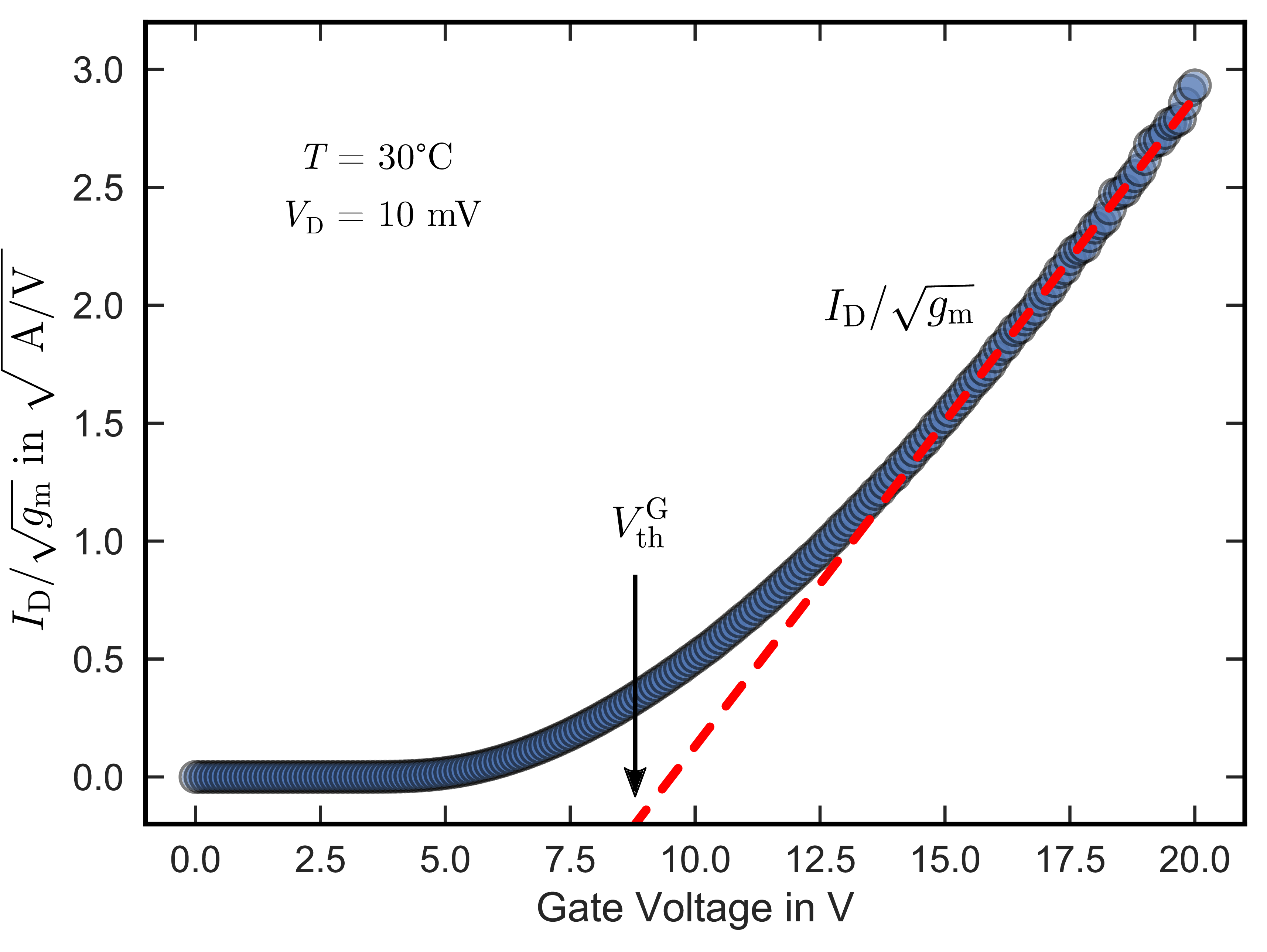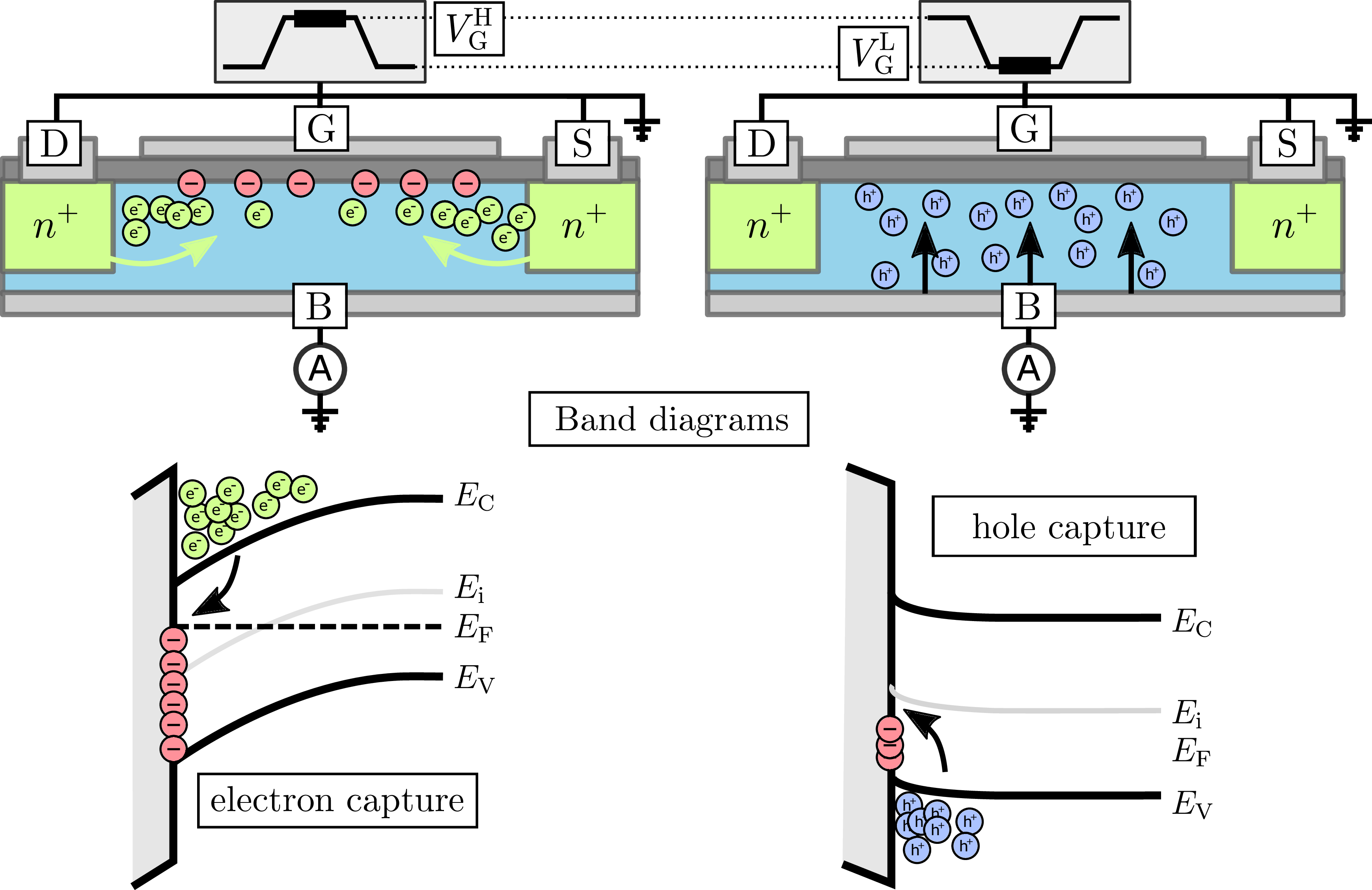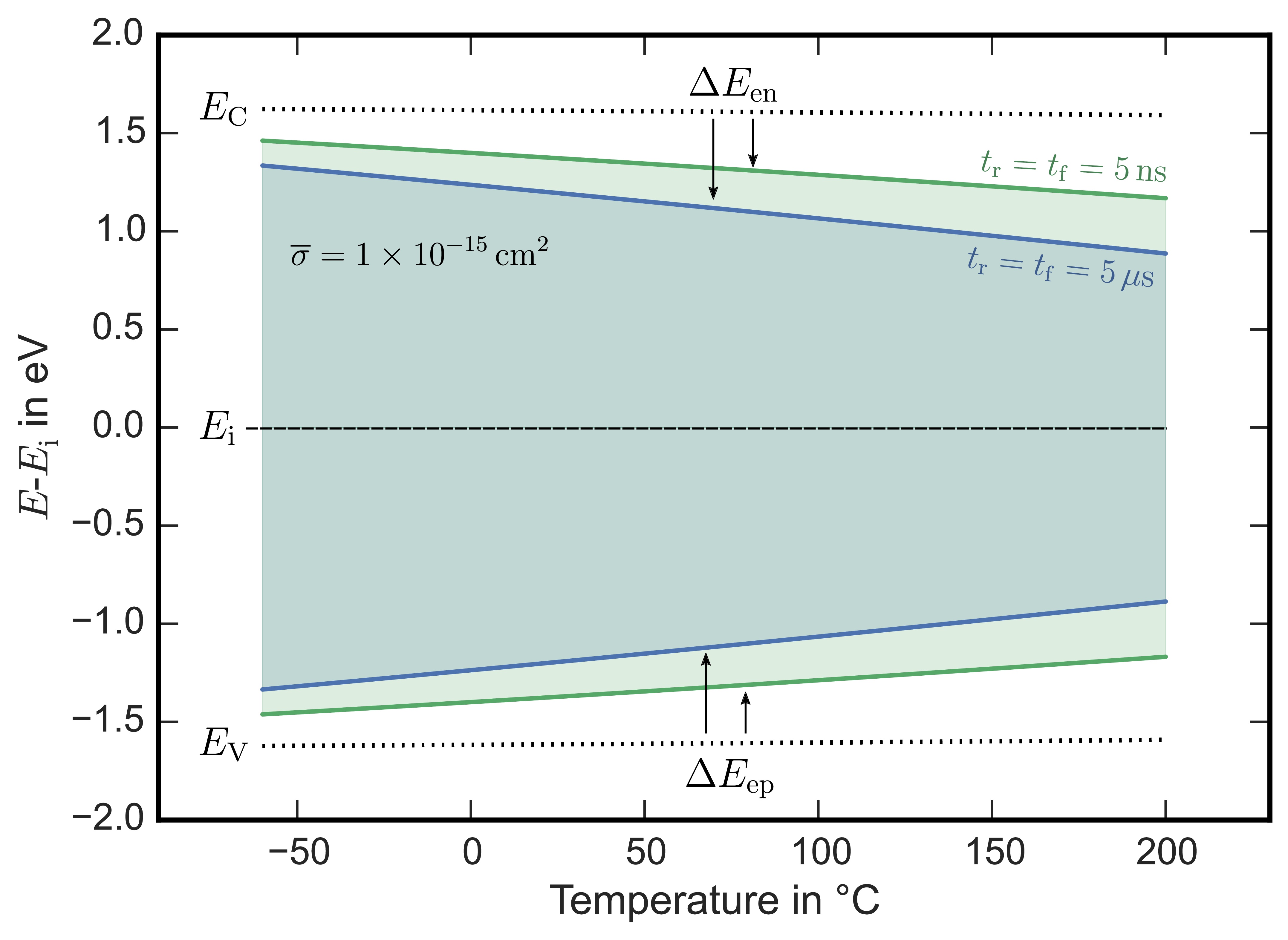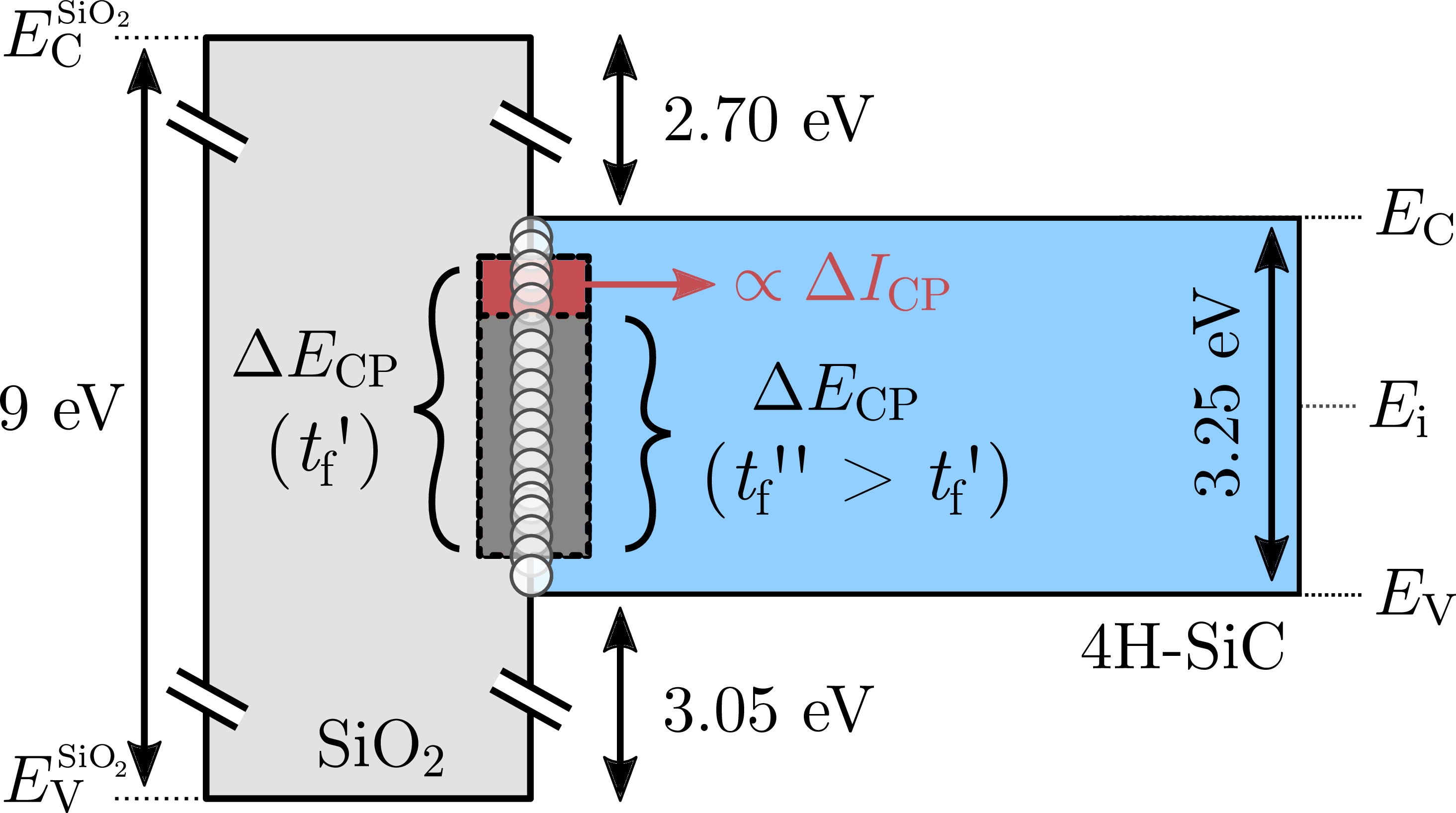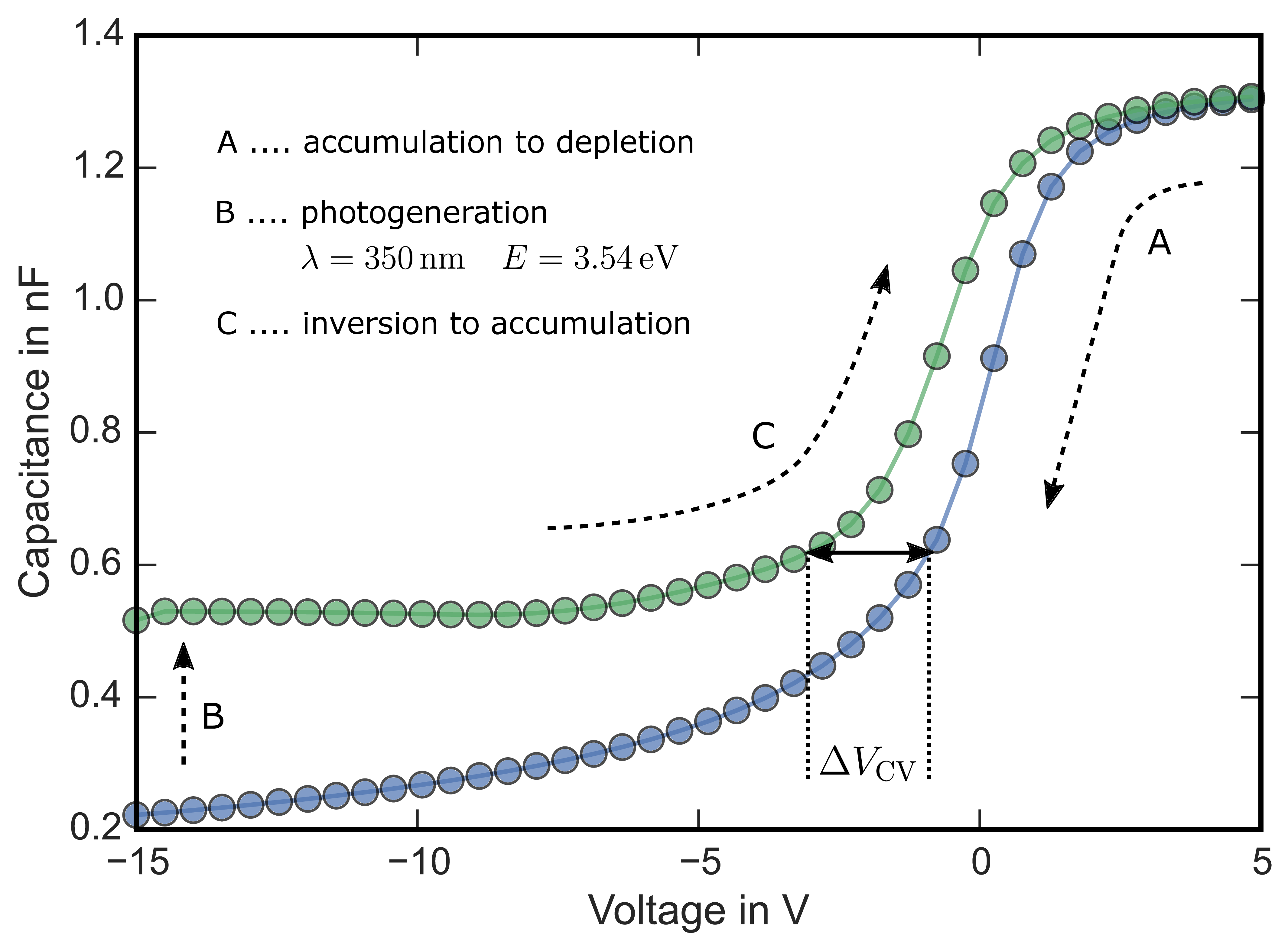« PreviousUpNext »Contents
Previous: 1.2 Detrimental Effects in MOS Devices Top: 1 Introduction Next: 2 On the first Component: the Subthreshold Hysteresis
1.3 Methodology
To understand the impact of various trapping centers on the electrical performance and reliability of SiC devices, numerous parameters were extracted using sophisticated measurement techniques. A brief overview on the available experimental setup and on how these electrical parameters were extracted is given in this section.
1.3.1 Measurement system
An overview on the available measurement equipment for all investigations in this thesis is given in Fig. 1.11. All measurements were performed using an Agilent B1500A parameter analyzer, which includes 4 high-resolution source-measurement units (SMUs) and one high-power SMU. All SMUs are connected to an Agilent E5250A switching matrix. For capacitance-voltage measurements an Agilent 4294A impedance analyzer was used, which is also connected to the switching matrix. An Oriel Instruments 66901 300 W xenon lamp in combination with an Oriel Instruments 74100 monochromator was used for measurements which require light at a specific wavelength (see Section 1.3.5). All measurements were performed within an Süss MicroTec probe station, where the temperature is controlled via an ATT Systems M200 temperature controller and an ATT Systems P40 cooling unit.
1.3.2 Layout considerations of SiC-power MOSFETs
Unlike in silicon power-MOSFETs, where the contribution of channel resistance to the total on-resistance
is negligible, the contribution of
to the total
in SiC-MOSFETs is significant. Here up to
approximately 50 % of the total on-resistance originates from the channel resistance due to the higher interface trap density and very low drift layer resistance. This results in the need for an increased die size, which
consequently raises the chip costs due to the very expensive base material (
for a 150 mm wafer).
Therefore, decreasing
using different crystal-planes with higher
mobility and shrinking the pitch size is of high importance for SiC based power-MOSFETs.
Typical device layouts used in commercially available SiC power MOSFETs are given in Fig. 1.12 and Fig. 1.13. A typical
DMOS design is shown in Fig. 1.12 with the inversion channel (red-arrows) forming on the (0001)-crystal plane (or Si-face). The trench designs (sketched in Fig. 1.13) enable a smaller pitch size, and furthermore take advantage of the higher mobility on the non-polar crystal planes along the -axis of the 4H-SiC crystal [74]. However, these trench devices require a
doped region to shield the insulator at the bottom
of the trench from the high electric fields, which arise in the
doped epitaxial drift layer in the off-state of the device due to the high drain
potential usually applied in power applications [71–73, 75].
As will be shown in Chapter 2, the number of fast interface states with a fully reversible charge state depends strongly on the crystal plane of the inversion layer, and therefore on the device layout.
1.3.3 Transfer Characteristics
The transfer characteristics (ID -VG s) represent the dependence of the drain current on the gate voltage
at a fixed drain voltage
. Fig. 1.14 shows typical transfer characteristics of a SiC nMOSFET before (blue) and after a high temperature gate stress for several thousand seconds (shifted, green). The threshold
voltage
, as a key parameter of a MOSFET, can be
extracted from the ID -VG s in manifold ways [76–81]. In this work,
is extracted using either a linear extrapolation
(as indicated in Fig. 1.14), or
is extracted via a defined readout current (e.g.
1 mA) at fixed drain voltage.
As already discussed in Section 1.2.1, a positive/negative bias stress results in a positive/negative threshold voltage shift , respectively. Assuming a parallel shift of the
transfer characteristics after bias stress, which is usually the case for SiC-nMOSFETs,
is given by
and the total number of charges trapped during the stress can be easily obtained from the shift of the
threshold voltage via
with the oxide capacitance .
The transfer characteristics are furthermore used for the evaluation of the low-field mobility using the method of Ghibaudo [78]. He derived
the linear function
with the transconductance and Ghibaudo’s definition of the threshold
voltage
. From (1.9),
is extracted as a fitting parameter from the
slope of the linear function
as indicated in Fig.
1.15 and Fig. 1.16. Note that in this thesis the term mobility always refers to the low-field mobility
unless otherwise stated.
Figure 1.15: Typical drain current (blue, top) and transconductance
(green, bottom) characteristics of a MOSFET.
Figure 1.16: Typical /
characteristic illustrating the param-
eter extraction via a fit of (1.9) (dashed, red) according to the method of Ghibaudo [78].
1.3.4 Charge Pumping
Charge pumping (CP) is an electrical measurement method which was proposed by Brugler and Jespers in 1969 [82]. The technique is very well suited for the quantitative determination of interface and border states in MOSFETs and was recently demonstrated on SiC based devices [29, 83–86]. The next paragraph will give a short introduction to the measurement technique. More detailed information is given in [82, 87, 88].
Figure 1.17: Basic scheme of a CP measurement on a n-channel MOSFET. Left: during the high-level of the gate pulse, an inversion channel forms and minority carriers (electrons) are captured in interface/border states (red). Right: during the low-phase of the gate pulse, these trapped electrons recombine with incoming holes from the substrate resulting in an net current flow (= charge pumping current) from the bulk to the source/drain terminals.
The basic connection scheme of a CP measurement is sketched in Fig. 1.17 for an n-channel MOSFET. While source, drain and bulk terminals are grounded, the gate is pulsed at a
frequency of several kHz from accumulation to inversion. During the high-phase of the gate pulse at , electrons from source and drain are injected
into the channel region of the device. Most of these electrons remain delocalized (free) in the semiconductors conduction band (green), while some get captured in interface or border states (red). As soon as the gate is switched back
to accumulation at
, delocalized electrons flow back to the source or
drain regions, while most of the trapped electrons remain captured during the falling edge of the gate pulse. These remaining trapped electrons recombine with incoming holes (blue) during the low-phase of the gate pulse, which
results in a net current flow from source/drain to the bulk. In typical charge pumping measurements the gate is pulsed with frequencies ranging from 10 kHz to 1 MHz. Therefore, electrons are repeatedly "pumped"
from the conduction band to the valence band via interface/border states resulting in an effective charge pumping current
at the bulk terminal. The maximum charge
pumping current
is directly proportional to the total number of
trapped charges per unit area
at the semiconductor-insulator interface
according to
Here, represents the effective gate area,
is the frequency of the gate pulse and
is the elementary charge.
Spectroscopic Charge Pumping
Spectroscopic charge pumping is a tool for the measurement of the energetic distribution of interface traps in MOS systems, which was proposed by Van den Bosch and Groeseneken in 1991 [89]. It is based on the fact that the
mean density of interface states is always given within a well
defined energetic fraction of the band gap according to
This energetic range within the band gap is called the active energy window given by
with the band gap , the thermal drift velocity of electrons and
holes,
and
, the capture cross section of electrons and holes,
and
, the charge-pumping threshold and flatband
voltages
and
, the amplitude of the gate pulse
and the rise and fall times of the gate pulse,
and
.
The upper boundary of is given by
whereas the lower boundary of is given by
It is important to note that in (1.13) and (1.14), also the drift
velocities , the capture cross sections
, and the effective density of states in
the conduction band
and valence band
depend on
. Therefore, the upper and lower boundaries of
can be easily adjusted by changing the
temperature or the rise and fall times of the gate pulse. This allows for a spectroscopic scan of the
within a certain range of the semiconductors
band gap. Fig. 1.18 shows the temperature dependence of
between −60 °C and
200 °C for two fixed pulse slopes of
and
.
Fig. 1.19 illustrates, how this effect is used in spectroscopic CP to obtain the energetic distribution of the interface/border trap states in the upper half of the band gap. The same
formalism holds for the lower part of the band gap by replacing with
. At a fixed
and rise time
, the charge pumping measurement is performed
two times with two different fall times
and
, with
being the faster, and
the slower one. For
,
is given by
, whereas for the slower fall time
, the upper boundary of the active energy
window,
, is further away from the SiC conduction band
due to (1.13), which results in the narrower active energy window
. Due to this, traps which are located within the energetic range
do not contribute to the charge pumping current in the measurement with . Therefore, the difference between both
charge pumping currents
is directly proportional to the within
. A spectroscopic scan along a large fraction of the SiC band gap is now easily
possible by varying
, which moves the energetic position of
along the band gap. Therefore, the energetic resolution of spectroscopic charge
pumping is given by
, which also depends on
but can be reduced by minimizing
according to (1.15).
1.3.5 Photo-assisted capacitance voltage profiling
Common techniques for the analysis of capacitance-voltage (CV) curves, like the high-frequency Terman method [90], do not work well in wide band gap semiconductors such as SiC [91]. The Terman technique is based on the
assumption that the interface states are not able to follow the small, high frequency AC signal, whereas they follow changes in the overlaying DC bias. For wide band gap semiconductors like SiC, this assumption leads to a significant
underestimation of the interface state density because deep states can not follow changes in the DC bias. For a measurement at room temperature and a very slow slew rate of 10 s/V the Terman technique can accurately
measure only between 0.2 eV and 0.6 eV above , which is less than 15 % of the 4H-SiC
bandgap [91].
Figure 1.20: Photo-assisted CV measurement on an n-MOS capacitor. After the sweep from accumulation to depletion in the dark (A), the sample is illuminated with 350 nm light while the bias is kept at
−15 V. Due to the generation of minority carriers, and therefore the formation of an inversion layer, the capacitance increases (B). The hysteresis , which occurs in the following sweep back to ac-
cumulation in the dark, can be used to estimate the density of interface/border traps.
A more promising and simpler to use method for a quick estimation of the number of interface/border states across the band gap at room temperature is the
photo-assisted CV technique [92–96]. A typical photo-CV curve is illustrated in Fig. 1.20 for a n-type 4H-SiC MOS capacitor. The voltage is swept from accumulation to
deep depletion in the dark, which results in the blue curve (A). Due to the low thermal generation rate of minority carriers in wide band gap semiconductors like 4H-SiC, no inversion layer is formed within a reasonable amount of time
at room temperature. Therefore, the sample is illuminated with 350 nm (corresponding to 3.54 eV) light to populate the inversion layer via photogeneration while the bias is held at −15 V. The formation of
the inversion layer is visible as a rise in the capacitance towards an equilibrium value (B). After the inversion layer is fully formed, the light is turned off and the voltage is swept back to accumulation in the dark, which results in the
green curve (C). Here, a voltage shift
occurs between both curves, which is caused by
minority carriers (in this case holes) trapped in interface states [97, 98]. The number of trapped states
per cm2 can be estimated via
Previous: 1.2 Detrimental Effects in MOS Devices Top: 1 Introduction Next: 2 On the first Component: the Subthreshold Hysteresis
